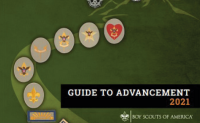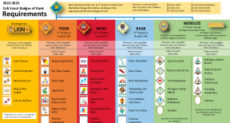 I once had four bosses in the same job, all at the same time.
I once had four bosses in the same job, all at the same time.
At one point in my career, I was a department head at a branch location of a company that had a half-dozen locations around the country. Our branch had two divisions, which my department supported, and each division had a manager. The location had a general manager who ran the overall branch operation, and the corporate headquarters had a chief of the department that I headed. I effectively answered to all of them.
Talk about confusion!
There were times when I felt like I was being pulled in four directions. Manager A wanted something done, but it went against what the corporate head’s policies permitted. Meanwhile, Manager B and the general manager were asking me to do different things as well. There was no clear managerial chain of command, and the way things ran in this organization made it difficult to rectify the situation. I left after a couple years, primarily for greener pastures, but also because the conflicting structure made it difficult for me to satisfy everyone.
If this befuddled me, think of how it would affect a Scout-age boy.
Yet, very often we see the same situation in Scouting. Our troops are supposed to have a defined chain of command (if you will) consisting of a senior patrol leader at the top, a patrol leader in each patrol and others in appointed positions of responsibility providing services and support. When the patrol method is weak, a troop can devolve into chaos.
Even more confusing is a proliferation of assistant Scoutmasters performing the functions of the Scoutmaster. Many troops delegate the task of conducting Scoutmaster conferences to assistant Scoutmasters, particularly for the earlier ranks. Some also have ASMs issue blue cards (and in one troop, the committee chair was issuing them). One of the questions I liked to ask Scouts during boards of review was “who is the Scoutmaster?” Usually, the obvious question was answered correctly, but frequently the Scout, often of Tenderfoot or Second Class rank, would name two or three of the assistant Scoutmasters. They probably got the impression, and confusion, because of the mixed signals surrounding the shared unit leader duties.
The one Scout that the Scoutmaster will spend most of his or her time with is the senior patrol leader, training and guiding him in running troop and patrol leaders’ council meetings and otherwise leading the troop. But one of the most important privileges and responsibilities of the Scoutmaster is to get to know individual Scouts on an individual basis through regular conferences. They can be formal, as for rank advancement, or informal, as for discussing merit badges and issuing blue cards, or just to check in and see how the Scout is doing. There’s a big reason it’s called a Scoutmaster Conference and not an “Assistant Scoutmaster Conference.”
In a troop with, say, forty Scouts, there should be plenty of time during troop meetings to sit down and meet with each Scout for ten or fifteen minutes once or twice a year without needing to delegate this important job to assistants. And a Scout will feel greater self-esteem if he’s meeting with the “big guy” for his rank advancement. If you’re the Scoutmaster, they’re looking up to you and feel let down when you can’t make time for them. And your time with the senior patrol leader comes just before and just after troop meetings, so meeting with Scouts won’t get in the way of that other important job.
Take a fresh look at what a Scoutmaster is supposed to do and re-prioritize your efforts if you find you need to. The Scouts shouldn’t have to endure the confusion of being handed off among multiple adult leaders.
This post first appeared on Bobwhite Blather.




